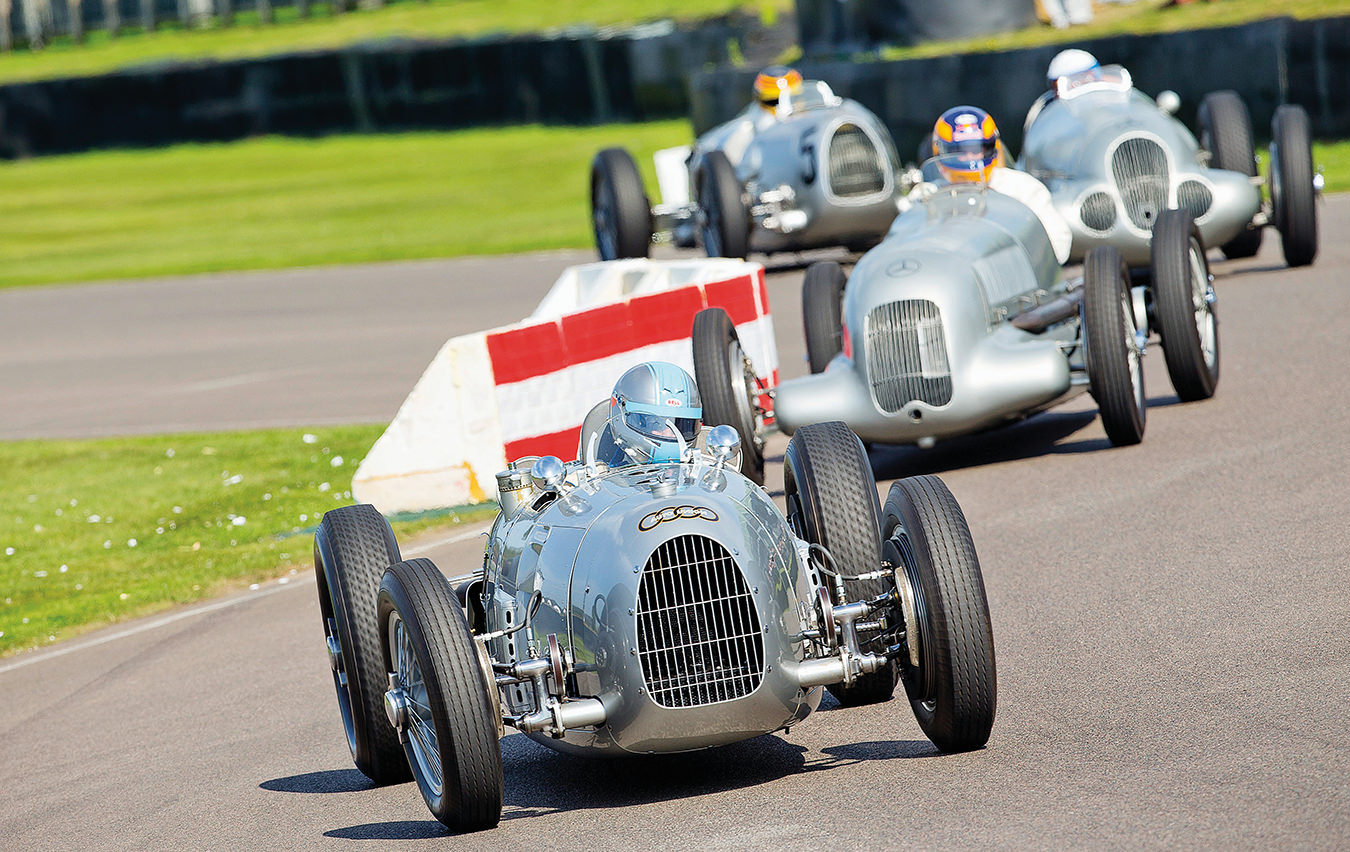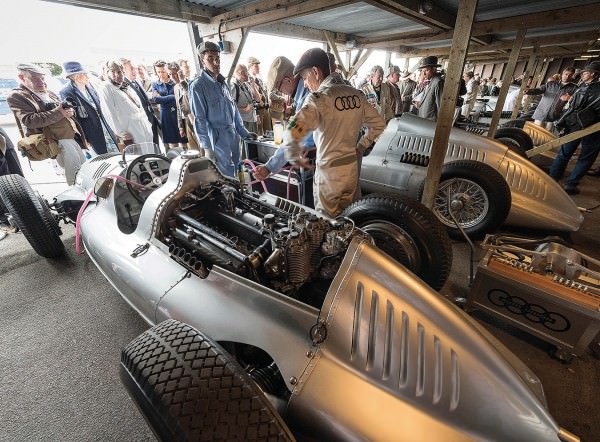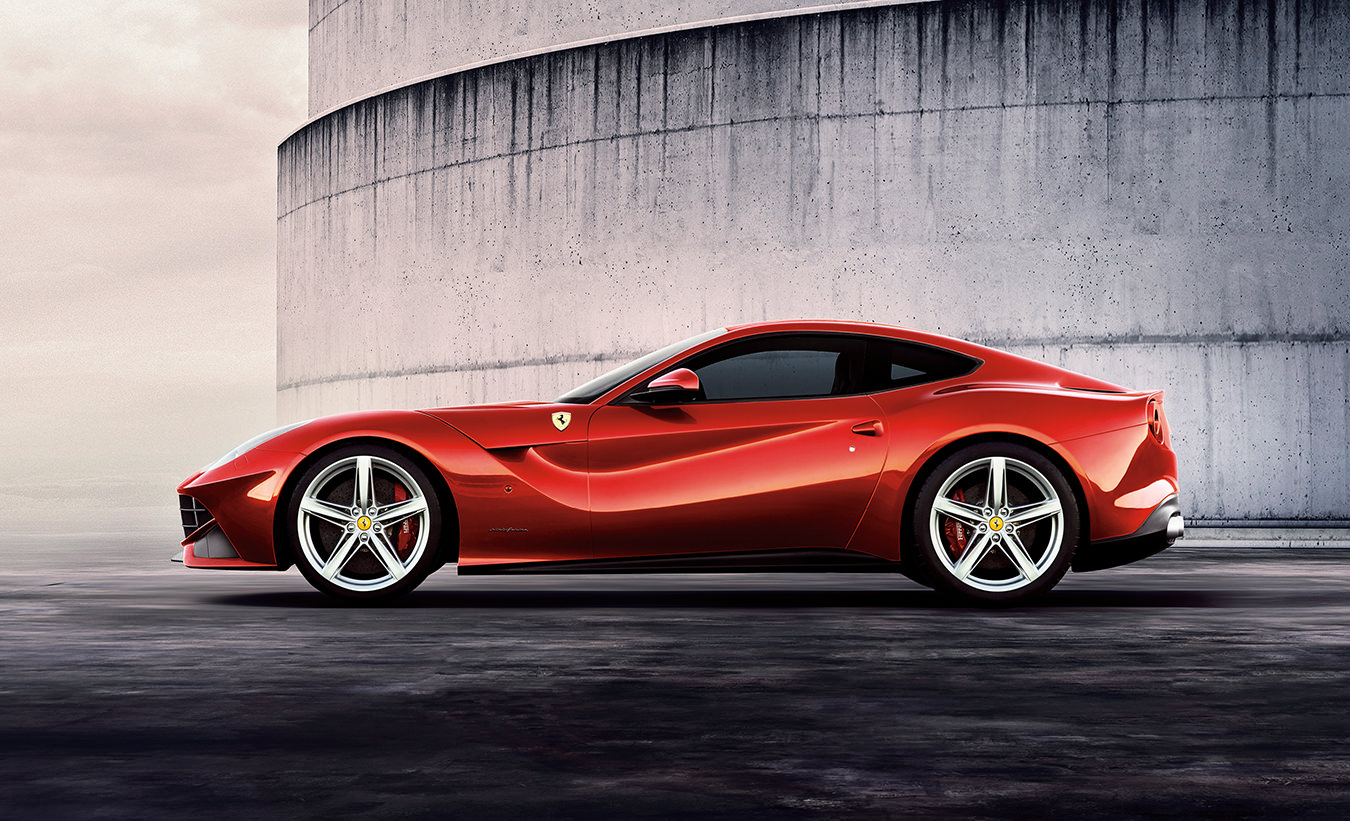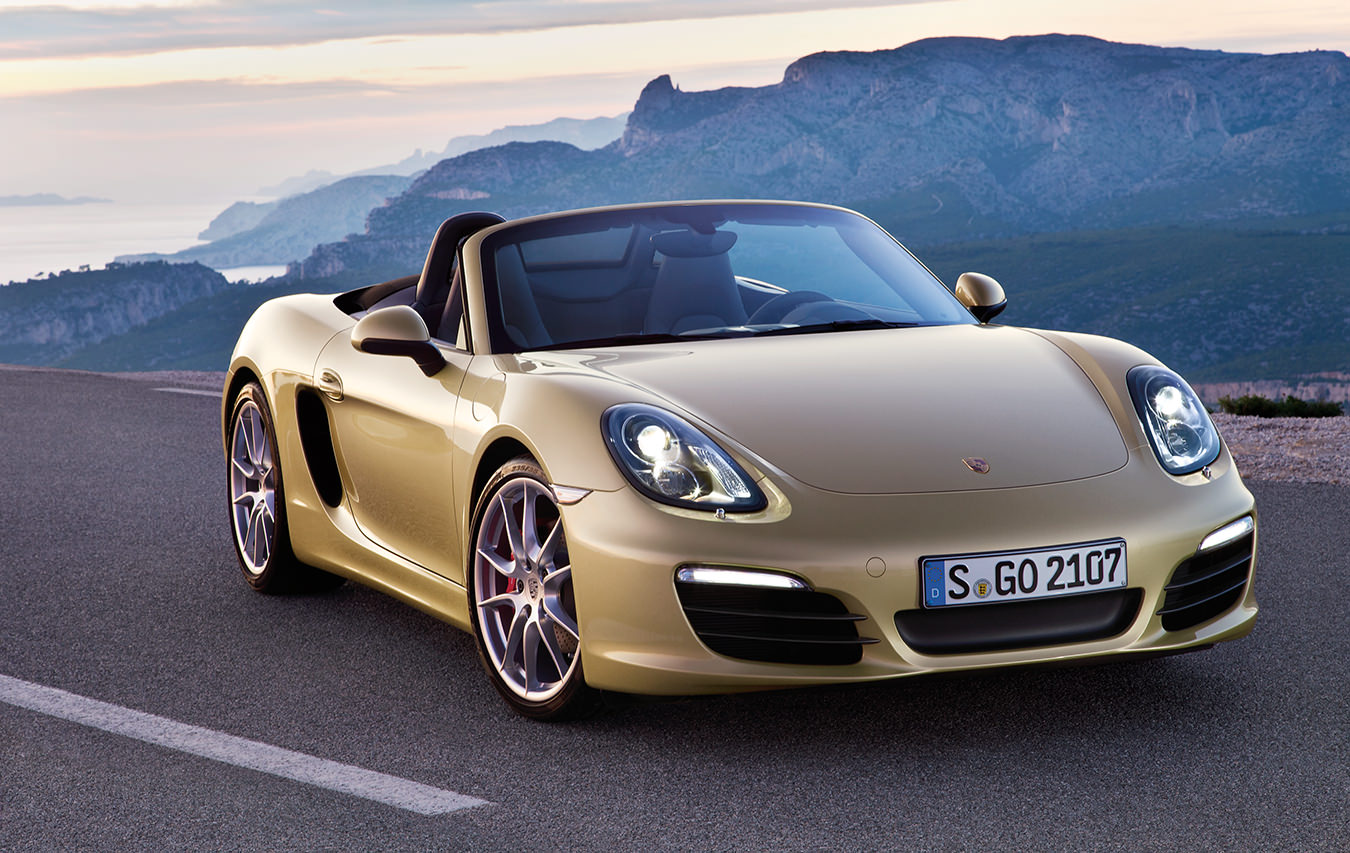The Goodwood Festival of Speed
The British racing scene.

Photo by Matthew Howell.
Goodwood House, West Sussex, England. For the true car lover, especially the person with a debilitating need for speedier machines, there are any number of events in any given year that are seemingly well equipped to whet the proverbial appetite.
Of course, there are the various international motor shows—convention centre gatherings that vie for the global media spotlight and the support of erstwhile tire-kickers. But truth be told, the traditional car show is falling out of favour with a number of the more desirable brands as they seek to set themselves apart from the crowd and for the crowd.
Not so long ago, all the significant new cars were revealed to the general public at one of three shows: Detroit (every January), Geneva (every March), and Frankfurt/Paris (the locations alternate each September). Nowadays, however, these three shows share the spotlight with others in Los Angeles, Moscow, New York, Mumbai, and Beijing/Shanghai (another alternating duo), to name but a few.
What this means is that brand new cars are revealed over the course of an entire year, and the average car fan—someone who visits just one major show a year—misses a lot of the action. The challenge, then, is to find the car show that represents a one-stop shop for visitors enamoured with all things automotive—and the Goodwood Festival of Speed is precisely that. The event was founded by Lord Charles March in 1993; the thinking was to bring motorsport activities back to the historic Goodwood race circuit in West Sussex, less than two hours south of London. Ultimately, the approval to hold a motorsport event at the track was not granted, so backup plans to stage a show on Lord March’s 12,000-acre property were put into motion. A car fan, he was further motivated by the need to generate income to help maintain the estate, which he inherited in the early 1990s, in tip-top shape.
The event began small but has since become a fixture on the British social calendar. The first event drew a crowd of 25,000, but growth has been ever mounting since then; a record 185,000 attended in 2012, and the picturesque country lanes that provide access to the estate can see traffic delays that stretch for hours.
Over the years, the focus of the Festival of Speed has shifted a number of times. The hill climb course, a 1.86-kilometre paved lane that runs through the heart of the property, is now reserved for demonstration runs. This decision came about after runs against the clock produced tragic results. The very first year, a racer on a vintage motorcycle died after hitting a tree, and in 2000, the driver of a historic 31-year-old Lotus 63 race car crashed into the finish line gantry, killing him and a marshal.
These days, only a few of the many classes of cars are timed during the run up the hill; none of the motorcycle classes are timed. The course record belongs to former Grand Prix driver Nick Heidfeld, who set the standard of 41.6 seconds while driving a McLaren-Mercedes MP4/13 F1 car. Because none of the superfast race cars are timed anymore, the odds that this record will stand are very good.
There have been other changes over the years. In 2000, the Sunday Times Supercar Run debuted. This demonstration of the world’s best production supercars has proven immensely popular ever since. Indeed, a few manufacturers took advantage of this year’s event to field-test brand new and forthcoming models: the Aston Martin Vanquish took part, as did the Jaguar F-Type, and the revised McLaren MP4-12C, ably piloted by the company’s Formula One driver, Jenson Button.
Another featured event, the Cartier Style et Luxe, is a classic car show complete with expert judges deciding on class winners. This year’s edition focused on Queen Elizabeth II in honour of her Diamond Jubilee; all the cars across five different classes—including a 1928 Citroën C4, 1929 Daimler Double Six 30hp Brougham, a 1950 Lincoln Cosmopolitan “Bubble Top”, and a 1961 Rolls-Royce Phantom V—were personally owned or used by Her Majesty. It was a stunning collection.
Yet another tradition: each year since 1999, a single car brand has been named the honoured marque, often in accordance with a significant point in brand history. For example, in 2009, Audi celebrated its 100th anniversary and was thrust into the spotlight at the Festival of Speed. Two of their most significant cars, the redoubtable Audi R8 and the groundbreaking Auto Union Streamliner, were mounted on a gigantic swirling sculpture created by British artist Gerry Judah.
When the British International Motor Show was cancelled after the 2008 run due to the global recession, interest in the Festival of Speed accelerated, particularly among manufacturers that no longer had a major venue in the United Kingdom to showcase their wares. As a result, the Festival of Speed is now a supercharged, outdoor version of your typical car show—and a significant portion of the 12,000 acres is taken up by grand displays from the likes of Audi, BMW, Mercedes-Benz, Peugeot, and Toyota.
The honoured marque at the 2012 event, Lotus, had a surprisingly large booth given their apparent financial uncertainty, complete with their road-car lineup, a few race cars from their storied past, and a large visitor’s lounge on the second floor. Other niche manufacturers, including Bentley, had more modest displays, but they nevertheless convey the importance this event now holds, particularly for the British brands.
But you don’t need to be British to benefit from the Festival of Speed, according to David Ingram, PR manager of product and technology for Audi UK. “The decision to participate was helped by the quality of the Goodwood brand,” he says, referring to Audi’s involvement since 1997. “It’s special because it’s a traditional English garden party with great cars.”
As this event focuses on speed, it made sense that a few notable Audi race cars were also on display this year—in particular, the R18 e-tron quattro that won the 24 Hours of Le Mans in 2012, and the Group B spec Audi Sport Quattro S1 that dominated the World Rally Championship in the 1980s. Spectators were stacked five deep watching the R18 navigate the hill climb and the Sport Quattro S1 take to the 2.5-kilometre forest rally stage.
If it seems like there’s a lot going on at the Goodwood Festival of Speed, that is correct. The event revolves around classic cars, but it has a significant motorsport component and features more modern automotive eye candy than one can hope to consume in a weekend. In fact, this is the crucial aspect to attending the Festival of Speed in person: you must concede that it’s an utter impossibility to see everything on display. Any other approach will lead to sheer frustration.
On the other hand, the beauty of the Festival of Speed is that there is only one venue; once you’re through the gates, there’s no need to take off and drive anywhere else. The moment you enter the grounds, there are examples of automotive excellence everywhere you look. Without question, there are far fewer restrictions than in a typical modern Formula One Paddock Club, but the sheer number of people in attendance make clear sightlines and easy access a distinct challenge.
In terms of star power, the 2012 Festival of Speed was remarkable. In one historic category alone, entries were piloted by racing greats John Surtees, Sir Stirling Moss, and Sir Jackie Stewart. The modern Formula One contingent was out in force as well; in addition to Jenson Button, other Grand Prix drivers to put on demonstration runs up the hill included Lewis Hamilton, Sebastian Vettel, and Audi Le Mans drivers Allan McNish and Tom Kristensen.
Of course, the event is great to watch, but it also does an outstanding job of involving the spectators in the fun. There were numerous computer driving simulators, a motocross school for beginners, and a wealth of booths with all manner of motoring paraphernalia for sale.
The Goodwood Festival of Speed is motoring madness crammed into a single weekend. No matter your dream car, your preferred form of motorsport, or your favourite competitor, the odds are good that you’ll find something worth a second look on Lord March’s grounds.
Top photo by Matthew Howell.




